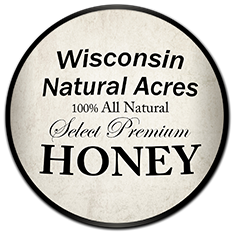Fun Facts About Honey Bees and the Benefits of Honey
Honey FAQ from Artisan Honey Bee Wrangler Doug
Did You Know?
The Queen Bee will lay approximately 3,000 eggs a day.
Honey never spoils. No need to refrigerate it. Honey can be stored unopened, indefinitely, at room temperature in a dry cupboard.
Did you know that honey bees have 4 wings?
A honeybee visits between 50 and 100 flowers during one collection flight from the hive.
The honeybee is not born knowing how to make honey; the younger bees are taught by the more experienced ones.
Raw honey is rich in antioxidants, enzymes, vitamins and minerals that provide the natural health benefits of honey.
Natural beeswax gets its yellow color from the pollen that “catches a ride” with the bee when it collects the flower’s nectar. White beeswax is chemically bleached.
In order to produce 1 pound of honey, 2 million flowers must be visited.
A bee flies at a rate of about 12 miles per hour.
The honeybee's wings stroke 11,400 times per minute, thus making their
distinctive buzz.
It would take approximately 1 ounce of honey to fuel a bee's flight around the world.
The United States has an estimated 211,600 beekeepers.
An average worker bee makes only about 1/12 teaspoon of honey in its lifetime.
Beeswax has been used for thousands of years to nourish skin and is widely used in natural lip balms, hand creams, salves and natural cosmetics.
Bees have been producing honey for at least 150 million years.
Honeybees communicate with one another by "dancing."
Honeybee colonies have unique scents that members flash like identification cards at the hive's front door. All the individual bees in a colony smell enough alike so that the guard bees can identify them.
We should treasure and protect honey bees for their honey, but more importantly for their pollination services. 80% of the pollination of the fruits, vegetables and seed crops in the U.S. is accomplished by honey bees.
Beeswax is harvested from the honeycomb, and has hundreds of uses, including skin care products and cosmetics, beeswax candles, as a coating on fresh produce, to condition and waterproof wood and leather, and as a coating on artisan cheese to protect it from spoilage during aging.

